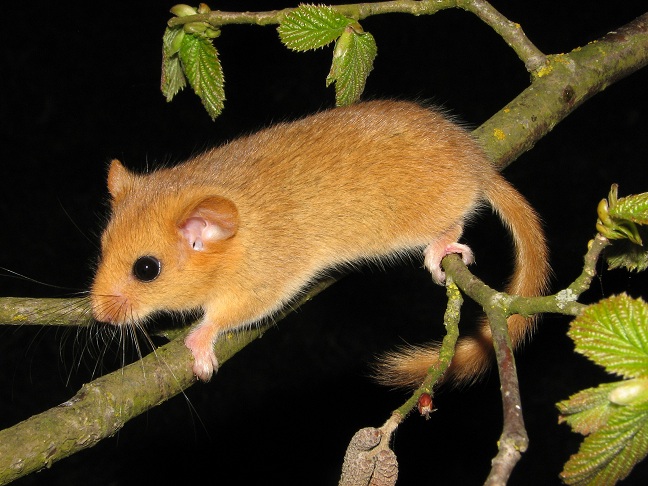Researchers observed two peaks of reproduction within the active season in a wild dormouse population in Lithuania. About one third of the litters were born early in the year (June), but the majority were born late in the active season (August/September). In mid-summer, however, only a small fraction of females gave birth to litters, although environmental conditions did not impair investment into reproduction in this time frame.
Wood mice have what is generally known as a “fast” life history but common dormice apparently have some flexibility to adjust their life history tactics (early versus delayed reproduction) to circumstances. Dr. Claudia Bieber and fellow scientists hypothesized that the ability to hibernate may explain this unusual bimodal birth pattern in the hazel dormouse.

Hazel dormouse. Source: Rimvydas Juskaitis
So far relatively little is known about hibernation and survival rates of small hibernators, such as common dormice. By means of a long-term mark and re-capture study, the researchers were able to determine that, unlike previously thought, survival rates were high during the hibernation period for all age-groups. Thus, even animals born late in the active season face a period with high survival probability during the upcoming winter season.
By comparing lifetime reproductive success (the number of juveniles produced in a females’ lifetime) the scientists found that the early-born juveniles outpace their late-born counterparts. The May-born cohort often manages to raise their first litter in the same year. In populations under high predation pressure, like the one in Lithuania, this “fast” life history strategy seems to convey an advantage. However, only females that already have a high body-mass in the spring manage to invest into early reproduction – for females with lower body-mass it is better to delay reproduction until late in the active season, which maximizes the chances of survival of their young. This is referred to as a “slow” life history strategy.
“Most interesting is the fact that we observed “fast” and “slow” life histories occurring within the same population,” says Claudia Bieber, lead author of the study. “It turns out that life histories are much more flexible within a species and even within a population than so far expected.”
Citation: Claudia Bieber, Rimvydas Junkaitis, Christopher Turbill and Thomas Ruf, “High survival during hibernation affects onset and timing of reproduction”, Oecologia, Volume 169, Number 1 (2012), 155-166, DOI: 10.1007/s00442-011-2194-7






Comments